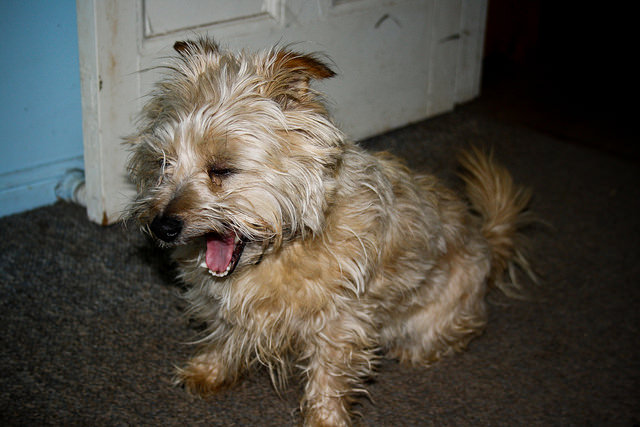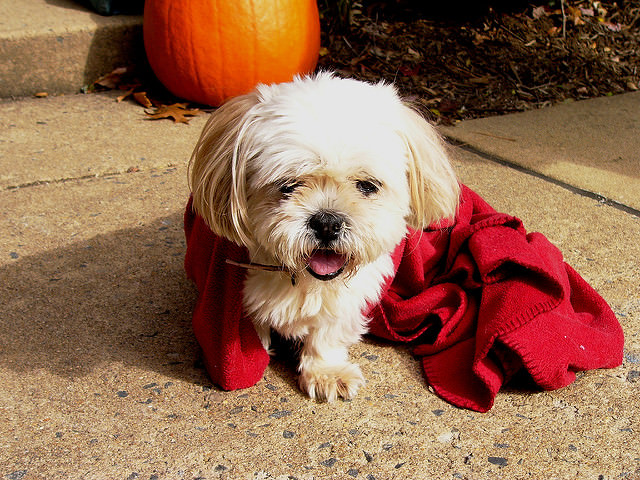Chances are you have witnessed a dog suffering from pharyngeal gag reflex – commonly known as reverse sneezing. During an episode, the dog will freeze, extend its neck, squeeze its eyes closed, and rapidly inhale air with a loud snorting sound.
The term reverse sneeze is used because it can look and sound like your dog is doing just that – inhaling a raspy, honking sneeze rather than expelling one!
Although it is a relatively harmless issue in most dogs, there are a few important facts all dog owners should know.
1. There Are Many Causes For Reverse Sneezing

Pinpointing the exact cause of your dog’s pharyngeal gag reflex can be difficult since the range of potential irritants is extensive. The reflexive spasms occur when the soft palate and throat become aggravated by a stimulant such as dust, debris, respiratory mites, irritating chemicals such as perfumes or household cleaners, food, water, allergens, viruses, foreign bodies, or tumors of the throat.
In addition, some dogs – especially smaller breeds – suffer from reverse sneezing when they become overly excited or have pressure applied to their throat from a collar or leash.
2. An Episode Of Reverse Sneezing Can Be Scary, But Is Usually Harmless

An episode of reverse sneezing can last for several seconds or even minutes which can be quite frightening to dog parents. Rest assured, despite the dramatic posture and honking, ragged sounds, your dog can breathe, and will usually be just fine once the spasms subside. Some owners find that massaging the throat can calm the dog and help to shorten an episode.
In rare cases, reverse sneezing can be a sign of a more serious respiratory problem like an elongated soft palate. Brachycephalic dogs – those with flat faces such as Pugs, English Bulldogs and Cavalier King Charles Spaniels – are prone to respiratory problems associated with elongated soft palates and narrow nostrils.
These dogs tend to have other symptoms of distress like gagging and exercise intolerance. Surgery can be performed to shorten the palate and widen the nostrils of these pups in order to improve their quality of life.
3. Reverse Sneezing Can Mimic Collapsing Trachea

Some people mistake the sounds and spasms of collapsing trachea for reverse sneezing, but while the latter tends to be harmless, collapsing trachea can be quite serious. The condition is often genetic and is common in small breeds like Yorkies, Toy Poodles and Chihuahuas. It can also be caused by chronic illnesses like heart disease and Cushing’s Disease.
A dog’s trachea is made up of C-shaped rings of strong, thick cartilage, but over time, these rings can weaken and change shape due to genetic malformation or disease. As a result, the rings flatten, leaving dogs with a narrowed airway. Symptoms of tracheal collapse include a dry cough, exercise intolerance, gagging while eating or drinking, and even respiratory emergencies.
Needless to say, this condition can be quite serious. Seek veterinary attention immediately if you suspect your dog’s symptoms may be the result of a collapsing trachea.
H/T to Pet Education & Mercola Healthy Pets
 Toledo, United States.
Toledo, United States.
